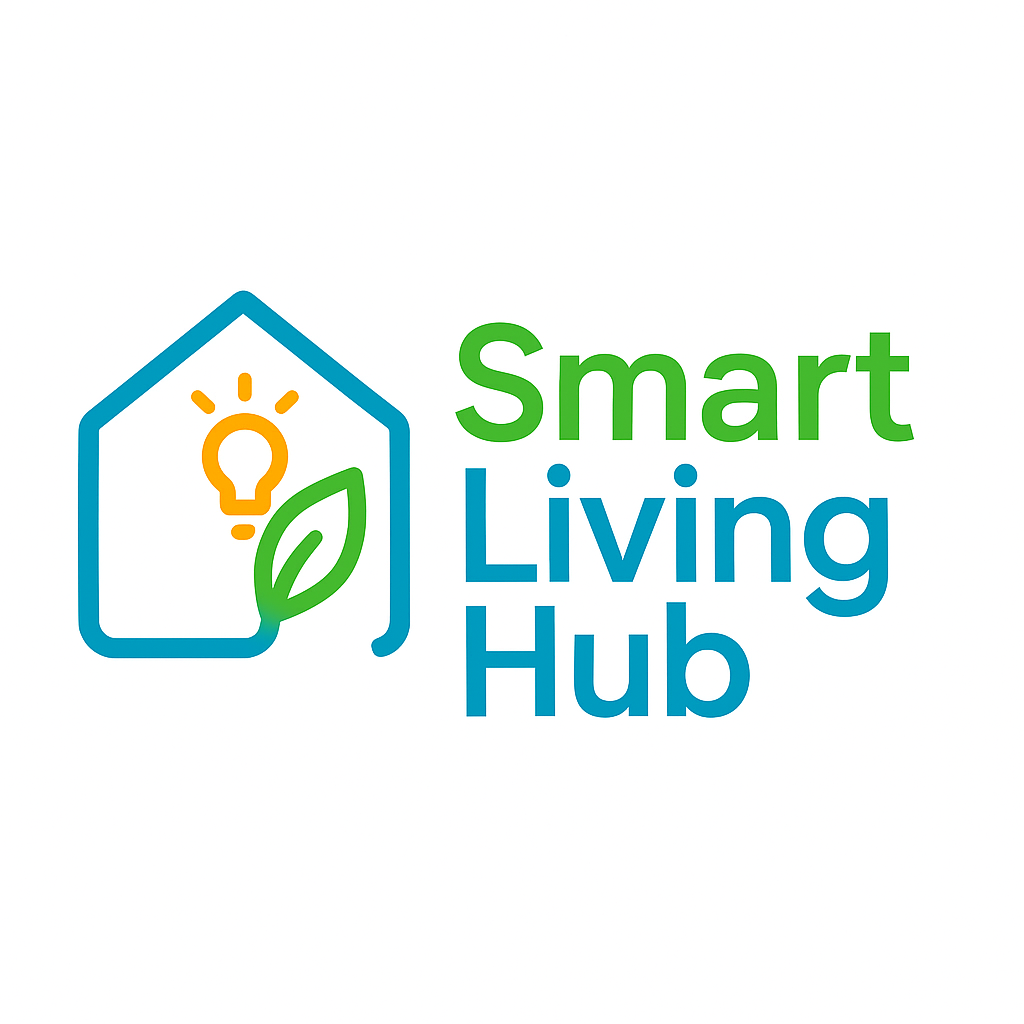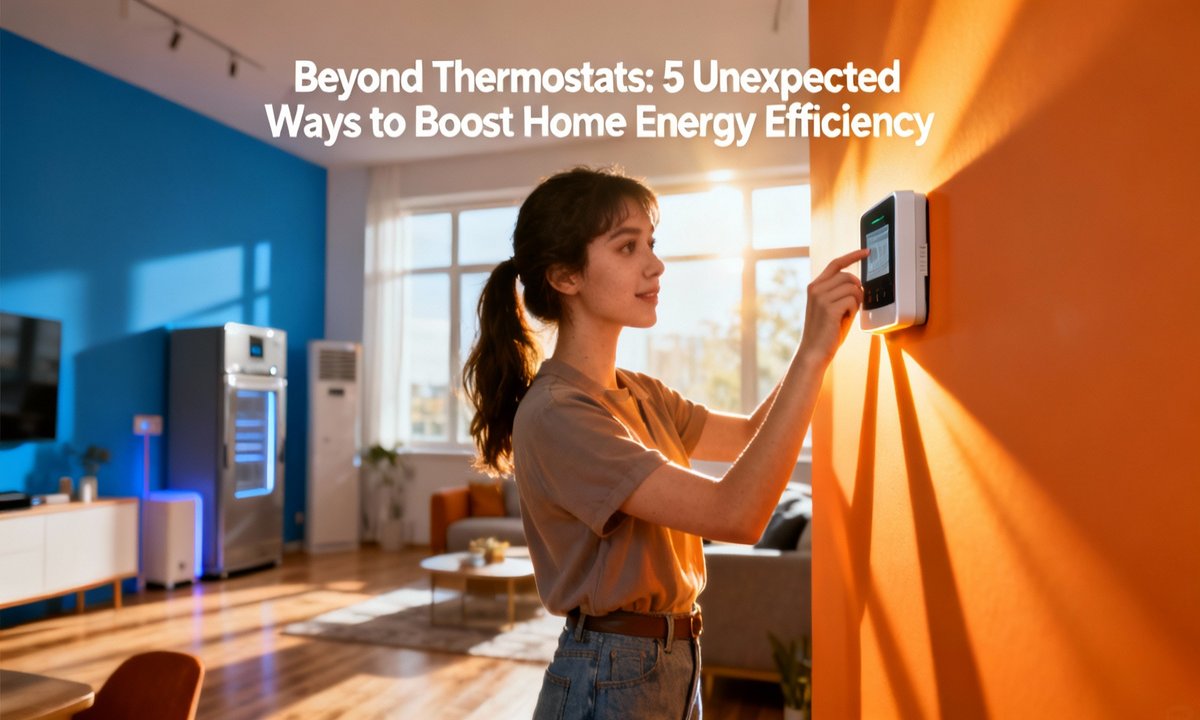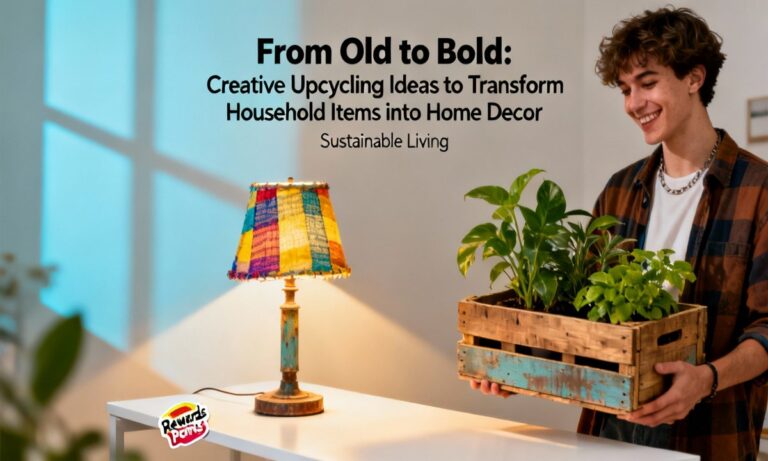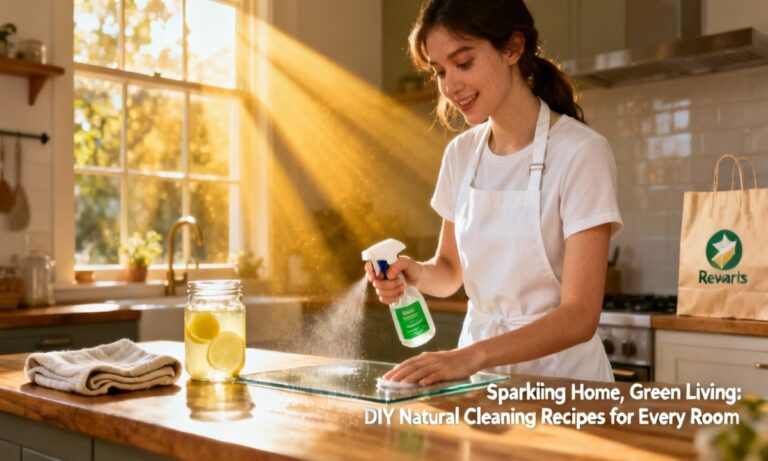Many homeowners initially focus on smart thermostats to enhance energy efficiency. However, a broader spectrum of effective solutions exists, extending well beyond simple dial adjustments. Discovering these often-overlooked strategies can significantly reduce your home’s energy consumption and boost comfort throughout the year, often with budget-friendly approaches that yield impressive results. Before diving into these innovative ideas, remember that consistent smart energy-saving habits can significantly amplify your efforts for optimal outcomes.
Beyond the Thermostat: Unlocking Deeper Home Energy Savings
Improving your home’s energy efficiency offers advantages far beyond reduced utility bills. It contributes to a healthier indoor environment, lessens carbon emissions, and ensures enduring comfort in every season. While a smart thermostat is an excellent starting point, many strategic upgrades can unlock even greater savings and enhance air quality for a better home. Let’s delve into five impactful, yet often unexpected, methods to make your home significantly more energy efficient, even without directly adjusting your thermostat.
The Power of Air Sealing
Many homes inadvertently lose considerable energy through small cracks and gaps, often found around windows, doors, and utility connections. Air sealing directly addresses these drafts, effectively minimizing heat loss during colder months and retaining cool air in the summer. This proactive approach improves your HVAC system’s performance and can reduce utility bills by 10–20%.
Simple Steps for Effective Air Sealing
Sealing these vulnerable areas with caulk, spray foam, or weatherstripping prevents energy escape. Focus particularly on attic hatches, recessed lighting fixtures, basements, and crawl spaces. This not only maintains desired temperatures but also reduces the entry of outdoor allergens and dust, improving your home’s overall indoor environment.
Benefits of a Tightly Sealed Home
Implementing air sealing offers a quick return on investment, delivering noticeable improvements in comfort almost immediately. Furthermore, by reducing the infiltration of outside air and pollutants, it contributes to significantly healthier indoor air quality for your family. Air sealing is a fundamental step to reduce home energy consumption, with numerous U.S. utility programs offering no-cost or low-cost options. Consider a professional home energy audit to precisely identify and prioritize the most significant leakage points in your residence.
Optimizing Your Home with Crawl Space Encapsulation
Below your home’s main living areas, the crawl space presents a significant opportunity for energy efficiency improvements. In regions with high humidity or fluctuating climates, open or unsealed crawl areas can allow excess moisture, pests, and outdoor temperatures to penetrate your living environment. Crawl space encapsulation addresses this by installing a robust vapor barrier, sealing vents, and adding insulation.
Why Crawl Space Encapsulation is a Smart Investment
This upgrade offers comprehensive benefits, preventing heat loss in winter and keeping your home cooler in summer. It effectively blocks moisture, safeguarding your floors, walls, and the structural integrity of your home. Moreover, encapsulation substantially reduces the risk of mold growth and significantly improves overall indoor air quality. This valuable upgrade may be offset by available tax credits and rebates, making it more accessible. Encapsulation proves particularly beneficial for homes in the Southeast or areas experiencing varying humidity or concerns about pests. Always select materials meeting U.S. building standards and choose installers experienced with your local climate.
Maximizing HVAC Performance with Duct Sealing
Your home’s ductwork acts as a vital pathway for conditioned air; however, leaks or improperly sealed vents can lead to a significant energy waste, potentially up to 30%. Duct sealing is crucial for ensuring that every carefully heated or cooled breeze effectively reaches its intended living space, enhancing comfort throughout your entire home.
Effective Strategies for Sealing Your Home’s Ductwork
To properly seal ducts, it’s advisable to hire a professional who can thoroughly test for leaks and execute a complete sealing process. Mastic sealant, rather than common duct tape, should be used for all joints, seams, and connections to ensure durability. Additionally, insulating ducts situated in unconditioned spaces like attics or basements is highly recommended.
The Advantages of Sealed Ductwork
By actively sealing your ductwork, you will significantly reduce energy waste, leading to lower utility costs. This also improves indoor air quality by preventing dust and allergens from entering your airflow. Furthermore, sealing extends the lifespan and enhances the efficiency of your vital HVAC system. Did you know that some utility programs offer subsidies for duct inspections and repairs? It’s worthwhile to investigate your eligibility for these valuable local incentives to further reduce improvement costs.
Embracing Efficiency in the Kitchen: Induction Cooking
The kitchen often accounts for a substantial portion of a household’s energy consumption. Adopting an induction cooktop presents an opportunity for highly efficient and precise cooking. This modern alternative also promotes a safer, cooler kitchen environment, while significantly reducing both energy usage and potential indoor air pollution.
Key Advantages of Induction Cooktops
Induction cooktops boast an impressive 80–90% energy efficiency, dramatically surpassing the 65% typically achieved by gas or standard electric ranges. They operate without combustion, eliminating gas fumes or soot indoors, and facilitate faster boiling and gentler simmering for evenly and quickly cooked food. Integrating induction cooktops can save busy families valuable time and money, especially during warmer months when traditional ranges can overheat a home.
Smart Choices for Kitchen Appliances
When upgrading appliances, prioritize selecting the best energy-efficient appliances that hold ENERGY STAR certification for maximum impact on your utility bills. Remember, induction cooking requires compatible cookware, such as cast iron or magnetic stainless steel.
Fresh Air, Low Energy: The Role of Energy Recovery Ventilators (ERVs)
Maintaining a fresh and comfortable indoor atmosphere often incurs significant energy costs; simply opening windows can allow valuable heating or cooling to escape. Energy Recovery Ventilators (ERVs) provide an intelligent solution, efficiently introducing fresh outdoor air while simultaneously recovering up to 80% of the energy from outgoing air.
How ERVs Enhance Indoor Air Quality and Efficiency
ERVs operate by exchanging stale indoor air for clean outdoor air, a process that also transfers heat or coolness from the outgoing to the incoming airstream. This innovative approach helps to maintain optimal humidity levels, reducing mold potential and significantly improving the overall quality of your indoor air.
The Future of Home Ventilation with AI
These ERVs not only enhance comfort but also safeguard your family’s respiratory health through improved air circulation. Modern models are designed to be compact, highly efficient, and can seamlessly integrate with most existing HVAC systems. Looking ahead, AI-powered energy solutions are further advancing ERVs, enabling them to automatically adjust ventilation for continuous, optimal air quality.
Expanding Your Energy-Saving Toolkit
Looking for even more ways to cultivate an energy-efficient home environment? Consider these additional impactful upgrades to further enhance your savings and comfort.
Additional Recommendations for a Greener Home
High-Efficiency Heat Pumps: These systems can reduce heating and cooling costs by up to 50% compared to older, traditional units. Be sure to explore available rebate incentives, as this significant upgrade can often be surprisingly affordable!
ENERGY STAR Appliances & LED Lighting: Upgrading to LED lighting can decrease electricity consumption by an impressive 90%. Similarly, choosing new appliances with the ENERGY STAR label can lead to 10–50% savings. These choices make a substantial impact on your home’s overall energy footprint.
Smart Home Controls: Move beyond basic thermostats with comprehensive smart home gadgets. These advanced systems optimize energy usage by adapting to occupancy patterns, predefined schedules, and real-time weather conditions, providing intelligent control over your home’s efficiency.
Solar Solutions: Harness the power of clean, affordable energy with rooftop solar panels, solar water heaters, or by participating in community solar projects. Discover more about installing solar panels in our comprehensive solar panel installation overview.
For aesthetic inspiration that never compromises on efficiency, explore eco-chic home décor ideas. Achieve a stylish look that not only saves energy but also impresses your guests with its thoughtful design.
Unlocking Financial Incentives for Homeowners
Did you know that many energy efficiency upgrades qualify for substantial financial benefits? Homeowners can access various rebates or valuable tax credits like the Energy Efficient Home Improvement Credit. Utility providers across the U.S. often extend incentives for crucial enhancements such as air sealing, insulation, and appliance upgrades. Refer to Total Home Performance’s guide or your local utility’s website to discover what financial support is available in your specific area.
Maximizing Your Savings with Pro Tips
Pro Tip: Always diligently retain all receipts and product documentation for your upgrades. This meticulous record-keeping is essential for successfully securing eligible credits and rebates when it comes time for tax preparation.
FAQs: Your Questions About Home Energy Upgrades Answered
Do you have questions about enhancing your home’s energy efficiency? Here are answers to some of the most frequently asked questions regarding these valuable upgrades.
Common Questions About Home Efficiency
Are these upgrades expensive? While initial costs vary, most strategies deliver rapid savings, and many are eligible for rebates, leading to quick payback periods. Air sealing and LED lighting typically offer the fastest financial returns on your investment.
How difficult are these projects for a DIYer? Simple tasks such as adding weatherstripping or upgrading to LED bulbs are certainly DIY-friendly. However, more complex projects like crawl space encapsulation, duct sealing, and ERV installation often require professional expertise for optimal results and safety.
Can renters benefit from these ideas? Absolutely! Renters can focus on accessible solutions such as window air sealing, utilizing smart plugs, and employing portable induction cookers. These simple adjustments can effectively cut energy use and significantly boost personal comfort.
What’s the best order to tackle improvements? Begin with a professional home energy audit to precisely identify your home’s most significant opportunities for efficiency gains. Afterward, prioritize projects based on their potential return on investment and any available financial incentives.
Will these changes really improve my indoor air quality? Yes, definitely! Strategies like air sealing, duct sealing, crawl space encapsulation, and ERVs all work to block external pollutants. This comprehensive approach leads to a healthier and safer living environment for your household.
Ready to Transform Your Home’s Efficiency?
Embracing these innovative and often unexpected methods to conserve energy can truly transform your living space. Your home can become a more comfortable, healthier, and financially efficient sanctuary. Whether you implement one suggestion or several, you are making a valuable investment in your comfort, property value, and contributing to a cleaner future. Don’t stop your journey here! Explore additional smart energy habits and discover more smart gadgets. For a tailored approach, contact us for a personalized energy assessment and unlock your home’s complete savings potential.




